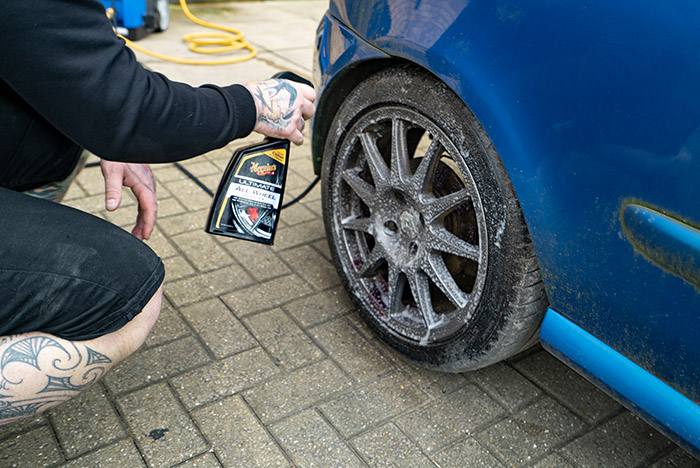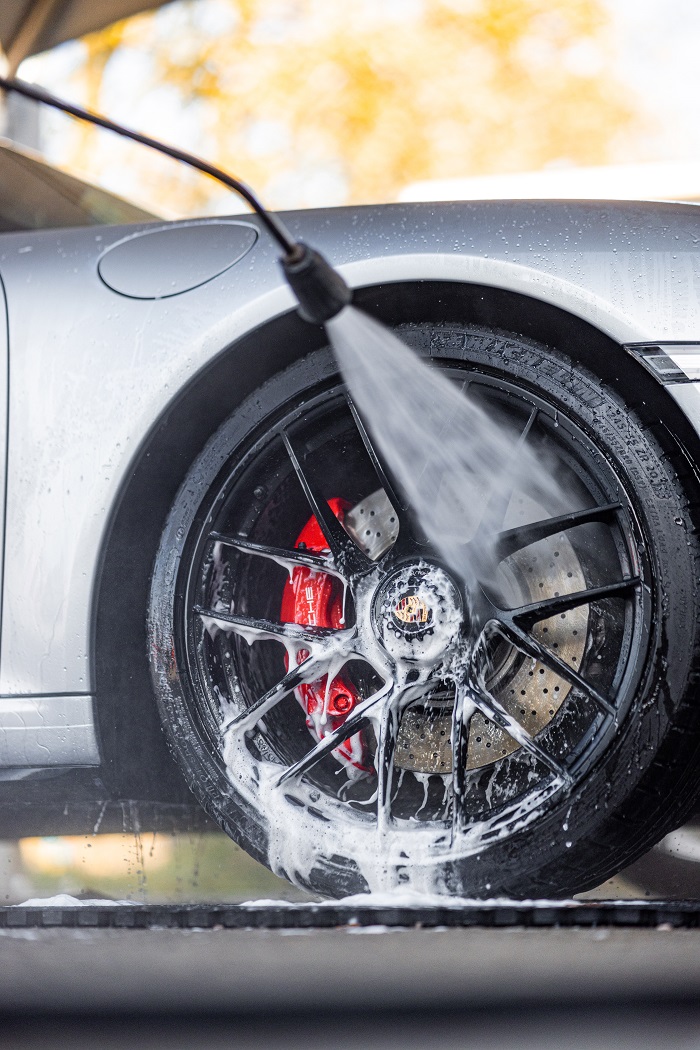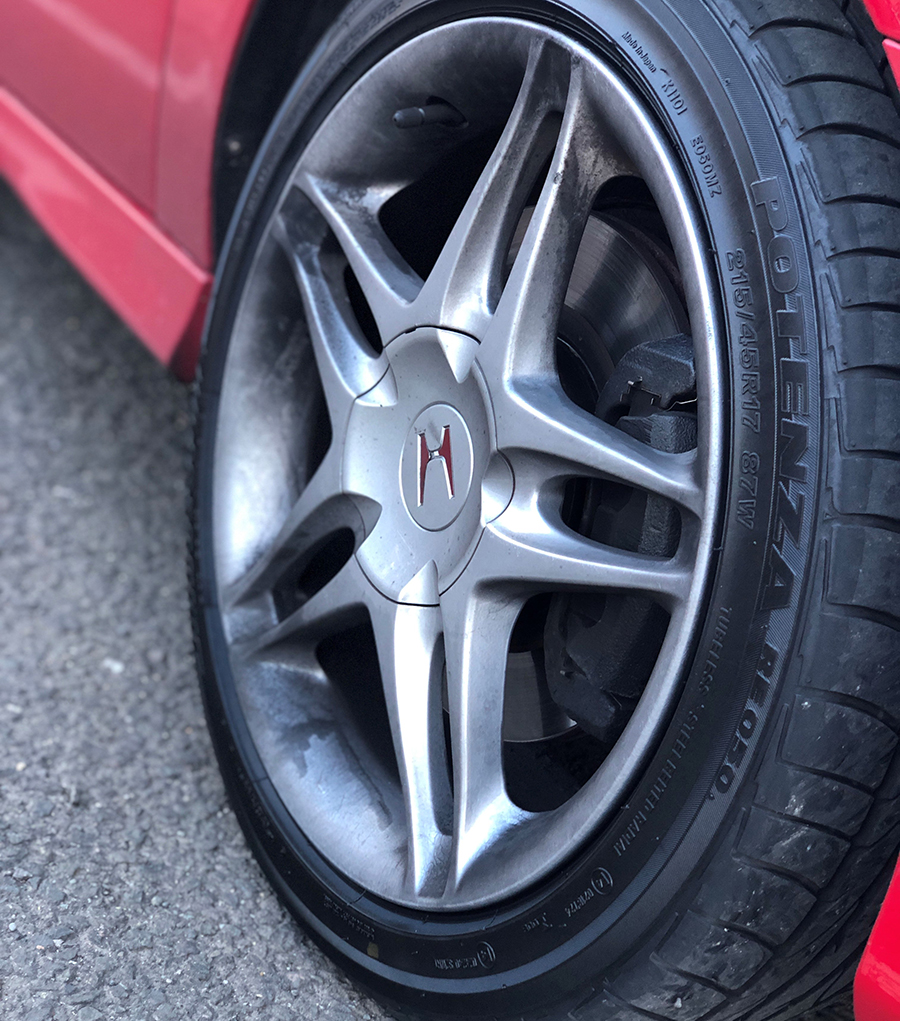Brake dust can turn the cleanest wheels dirty in a matter of days. So what is it, how do you remove it and can you prevent it entirely? We explain all.
It doesn’t matter whether you drive often, or not, whether you brake harshly or not, or whether you drive your car on track or on the road. Brake dust will always make its way on to your wheels from the brake pads. It’s inevitable. But what is it?
What is brake dust?
Put simply, brake dust is the waste residue that is created when your caliper presses and clamps the brake pads onto the rotor/disc in order to slow your vehicle down. The harsher your brake on the pedal, the tighter the caliper clamp and therefore the more pressure the pad faces when pushing against the rotor.
The brake pad itself features a metal compound, which is worn down overtime. That worn down compound leaves behind brake dust as its in use, and with no where else to go, it attaches itself to your wheels and other areas in the wheel arch. Brake dust is made up iron particles, carbon residue and friction material.
In truth, the amount of brake dust that builds up can be reduced with two factors. One, brake earlier, and thus brake lighter. This will reduce the amount of pressure needs to slow your vehicle down, thus using less compound. The other is to purchase a brake pad which is built to produce less brake dust. The former all depends on how your vehicle is driven. If it’s a track car, then you will be pressing the pedal hard, corner after corner, thus using more braking performance in a very short space of time building huge amounts of heat. Not much you can do about that, unless you upgrade to a carbon ceramic brake setup which dramatically reduces brake dust due to the difference in compound.

How to remove brake dust from alloy wheels
Thankfully, while you’ll never be able to stop brake dust entirely, you can remove it fairly easily. You will need the right products, however, as it involves using a pressure washer as well as some wheel cleaner.
- Spray the wheels with a pressure washer
- Apply wheel cleaner product and allow the product to dwell
- For particularly dirty wheels, use an appropriate wheel brush to lift dirt
- Use the pressure washer to remove the product from the wheels
- Wash your vehicle as you would, remember to dry your wheels afterwards
- Apply protective coating
There are a great deal of wheel cleaning products on the market, but to save you the hassle of picking one, we tested 8 of the best in a group test to find out which really is the best wheel cleaner in 2023.
Once you’ve got your wheel cleaner, simply spray the product onto each wheel and allow it to dwell. Each product differs for the ideal time to allow for dwelling, but most will suggest no more than 5-10 minutes. You don’t want the product to dry on the wheel as this can lead to damage.
The wheel cleaner works by eating into break dust and drawing them off the surface of the wheel. Be warned, most products don’t smell particularly nice, but rest assure they’re safe to use on most wheel finishes. To remove the product, simply use your pressure washer. You should be left with a beautifully clean wheel. If not, you can apply a second coating and use a soft wheel brush to agitate the surface. This is needed with heavy brake dust residue that hasn’t been cleaned for some time.

Can you prevent it?
Technically, no, not unless you’re using a carbon brake pad. But, you can apply waxes and other coatings to your wheels that will fight against brake dust sticking to your alloy wheels.
The other option, and more expensive, is to opt for a carbon brake pad. These rubber-based pads don’t release anywhere near the same amount of dust, and therefore don’t build up in the same way. But, carbon ceramic brakes are very expensive, so be warned.
You should always keep on top of brake dust build up on your wheels and around your braking system. Heavy build up can affect braking performance by creating imperfections in the surface, leading to vibration and noise. Not only this, but left for a long period of time, brake dust can affect the surface of your alloy wheel.
Be sure to check out step-by-step guide on how to clean alloy wheels for more information.







